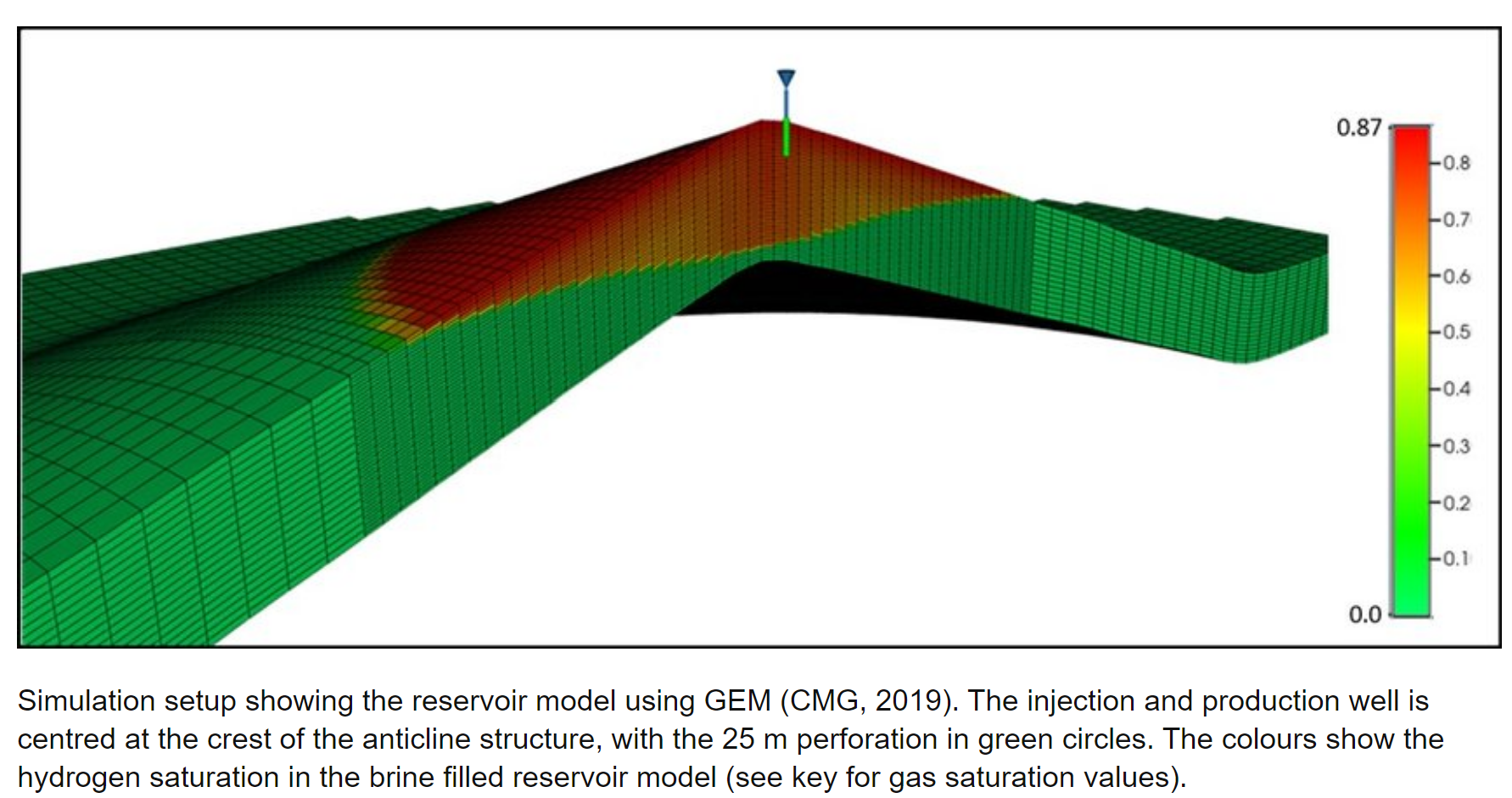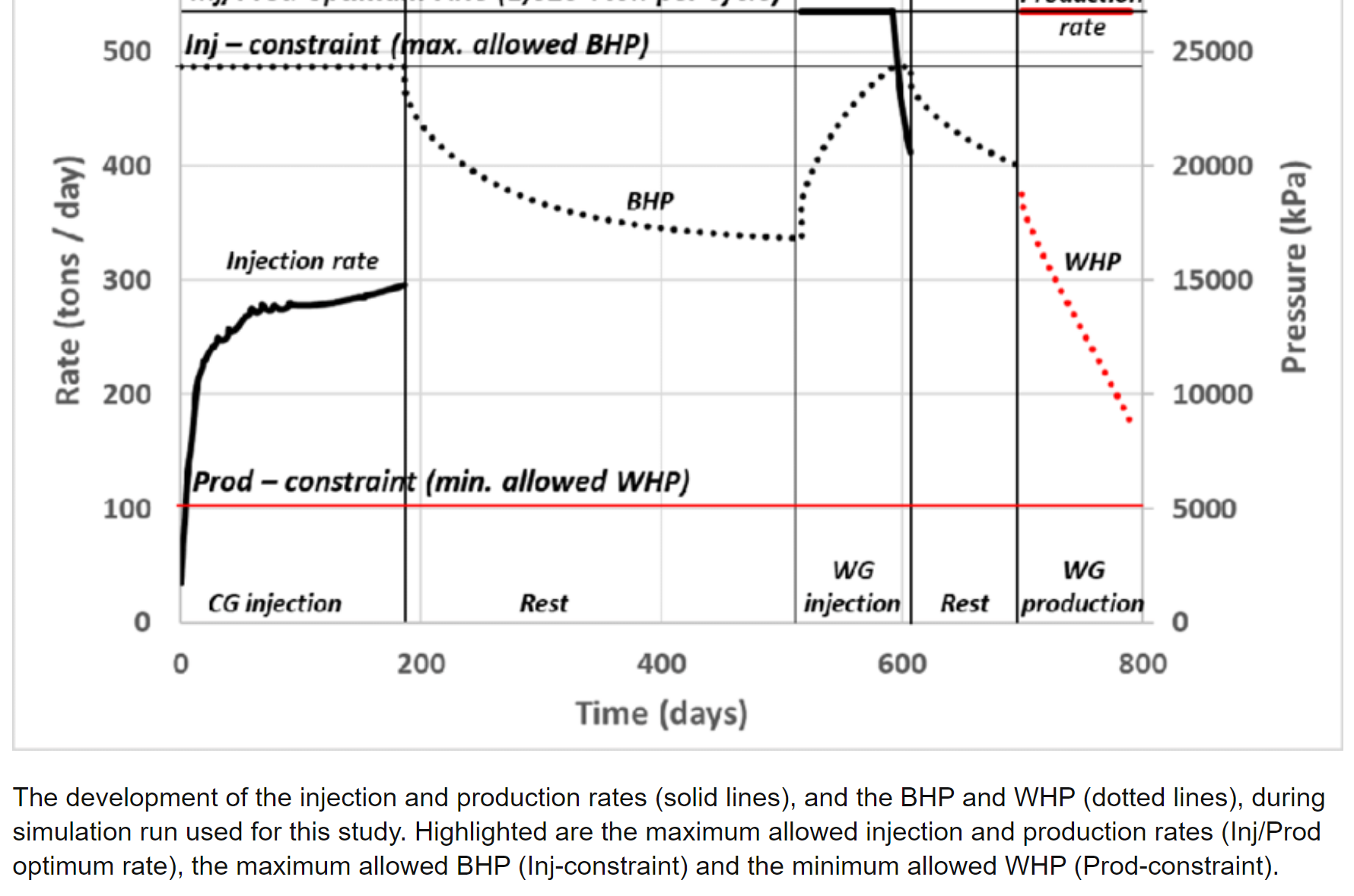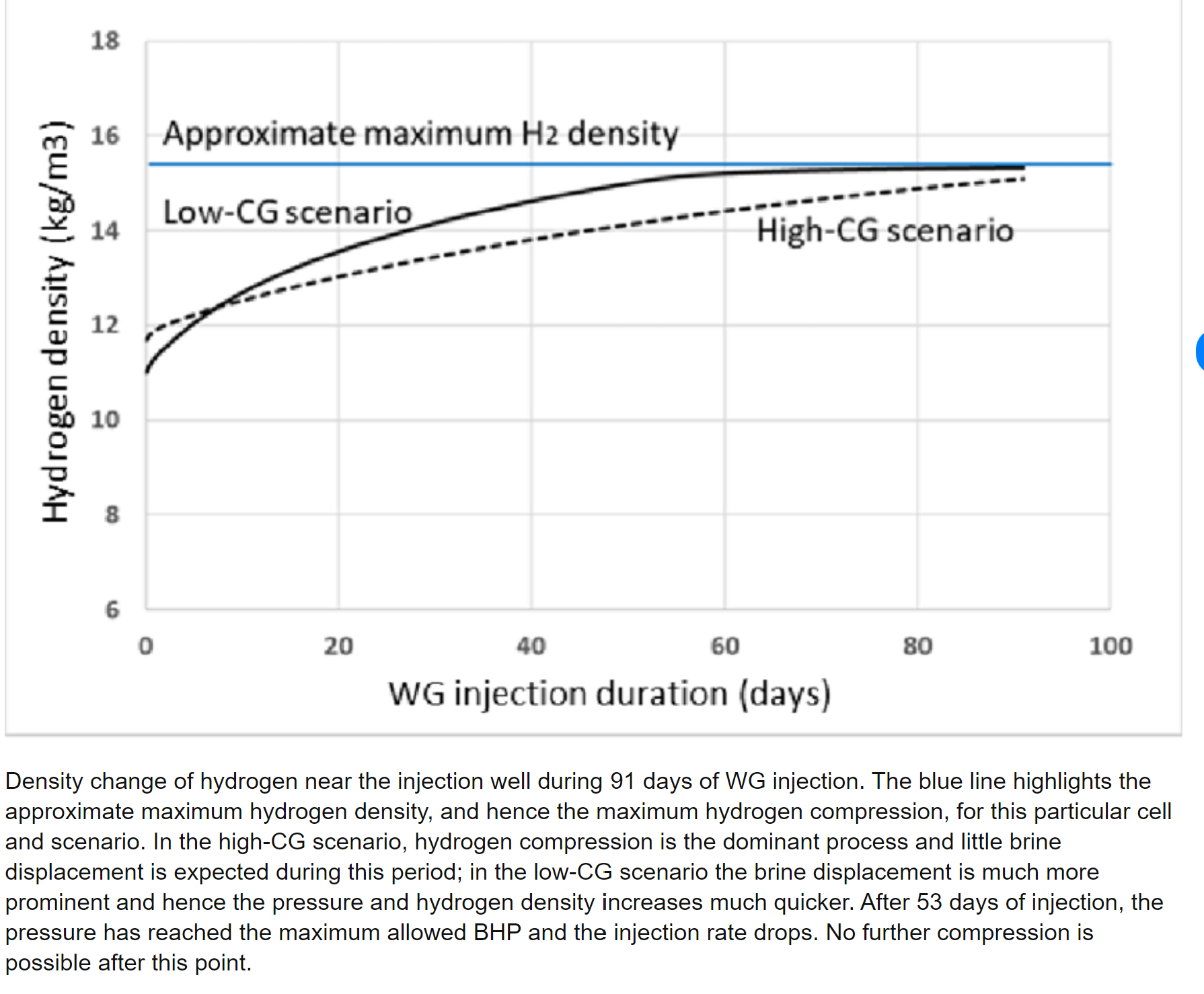Hydrogen storage in saline aquifers: The role of cushion gas for injection and production
Abstract
Hydrogen stored on a large scale in porous rocks helps alleviate the main drawbacks of intermittent renewable energy generation and will play a significant role as a fuel substitute to limit global warming. This study discusses the injection, storage and production of hydrogen in an open saline aquifer anticline using industry standard reservoir engineering software, and investigates the role of cushion gas, one of the main cost uncertainties of hydrogen storage in porous media. The results show that one well can inject and reproduce enough hydrogen in a saline aquifer anticline to cover 25% of the annual hydrogen energy required to decarbonise the domestic heating of East Anglia (UK). Cushion gas plays an important role and its injection in saline aquifers is dominated by brine displacement and accompanied by high pressures. The required ratio of cushion gas to working gas depends strongly on geological parameters including reservoir depth, the shape of the trap, and reservoir permeability, which are investigated in this study. Generally, deeper reservoirs with high permeability are favoured. The study shows that the volume of cushion gas directly determines the working gas injection and production performance. It is concluded that a thorough investigation into the cushion gas requirement, taking into account cushion gas costs as well as the cost-benefit of cushion gas in place, should be an integral part of a hydrogen storage development plan in saline aquifers.



